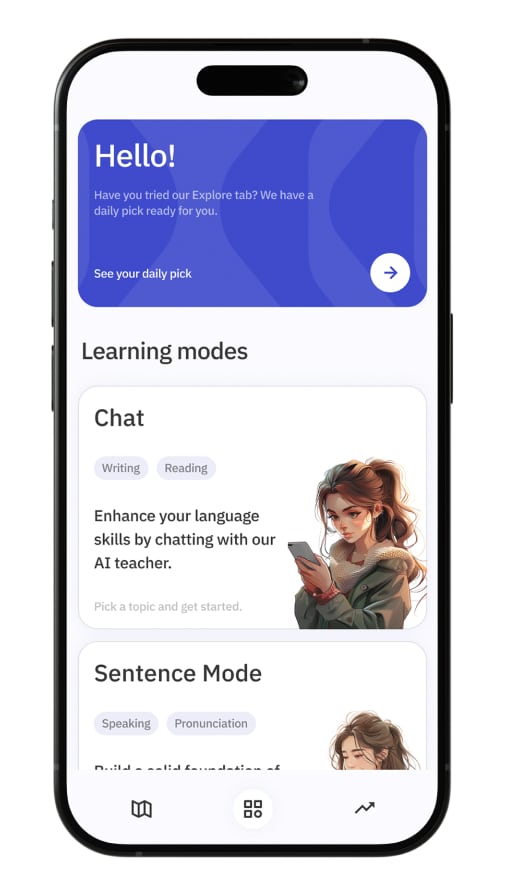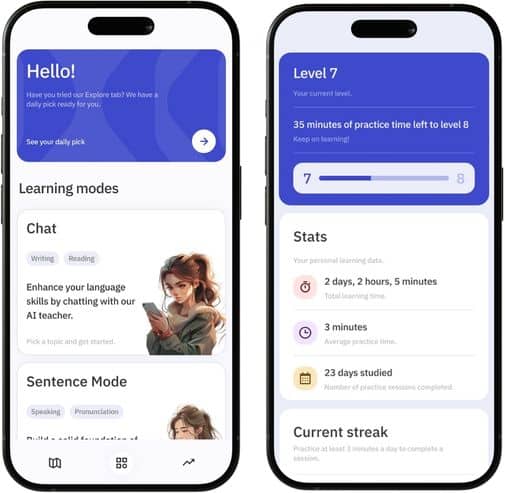
- Visual Stories
- பிற பிரிவுகள்
- லைஃப்ஸ்டைல்

பேச்சின் முன்னுரைதான் ரசிக்கவைக்கும்..! பேச்சை ருசிக்கவைக்கும்..!

Introduction For Speech in Tamil-ஒரு பேச்சு என்றால் அதை ஆர்வமாக கேட்க வைப்பதற்கு முன்னுரை அவசியம். ஒரு முன்னுரையே அந்த பேச்சு ஆர்வமானதா..இல்லை போரடிக்குமா என்பதை தீர்மானித்துவிடும். அந்த வகையில், ஆர்வத்தை தூண்டும் முன்னுரை செய்யவேண்டும் என்பதை இங்கு பார்ப்போம்.
என்ன செய்ய வேண்டும்?
கேட்போரின் கவனத்தைக் கவருகிற வகையில் எந்த கருத்தை வலியுறுத்தி கூறவேண்டும் என்கிற குறிக்கோளை அடைய நேரடியாக உதவுகிற பொருத்தமான வார்த்தைகளில் முதல் வரியிலேயே பதிவு செய்துவிட வேண்டும்.
ஏன் முக்கியம்?
நாம் பேசுவதை சிலர் செவிகொடுத்துக் கேட்பார்களா என்பதையும், எந்தளவுக்கு கூர்ந்து கவனிப்பார்கள் என்பதையும் முடிவு செய்வதற்கு நாம் தரும் முன்னுரையே தீர்மானித்துவிடும்.
எந்தவொரு பேச்சிலும் முன்னுரை என்பது முக்கிய பங்கு வகிக்கிறது. கேட்போரின் ஆர்வத்தைத் தூண்டினால், அடுத்து சொல்வதை கூர்ந்து கவனிப்பதற்கு தயாராவார்கள். பேச்சில் உங்களுடைய முன்னுரை ஆர்வத்தைத் தூண்டத் தவறினால், நீங்கள் ஒருவேளை தொடர்ந்து பேச முடியாமல் கூட போகலாம்.
ஒரு முக்கிய கூட்டத்தில் ஒரு முக்கிய தலைப்பில் பேசும்போது அவையில் அமர்ந்து இருப்போரின் ஆர்வத்தை ஈர்க்கவில்லையென்றால், அந்த பேச்சால் எந்த நன்மையையும் இருந்துவிடப்போவதில்லை. கேட்கப்பாடாத பேச்சு காதுகேளாதோரின் முன் பொழிந்த பேச்சாகும்.
முன்னுரையை தயாரிக்கும்போது பின்வரும் குறிக்கோள்களை மனதில் கொள்ளுங்கள்:
(அ) கேட்போரின் கவனத்தைக் கவருதல்
(ஆ ) பொருளைத் தெளிவாக குறிப்பிடுதல்
(இ ) கேட்போருக்கு இந்தப் பொருள் ஏன் முக்கியம் வாய்ந்தது என்பதைக் காட்டுதல்.
சில பேச்சுகளை தேர்வுசெய்யும்போது இந்த மூன்று குறிக்கோள்களையும் ஒரே சமயத்தில் வலியுறுத்திவிட முடியும். இருந்தாலும், சில சமயங்களில் இந்தக் குறிக்கோள்கள் ஒவ்வொன்றிற்கும் தனித்தனியே கவனம் செலுத்தவேண்டும். வரிசைக் கிரமமும் மாறுபடலாம்.
கேட்போரின் கவனத்தைக் கவருவது எப்படி?
பேச்சைக் கேட்பதற்கு மக்கள் கூடியிருப்பதால் ஒவ்வொருவருமே பேசப்படும் விஷயத்தை கவனம் சிதறாமல் கூர்ந்து கவனிப்பார்கள் என சொல்லிவிட முடியாது. ஏன்? பல சூழல்கள் அவர்களுடைய கவனத்தைச் சிதறடிக்கலாம். அவர்கள் வீட்டுப் பிரச்னையைப் பற்றியோ வேறெதாவது ஒன்றைப்பற்றியோ நினைத்துக் கொண்டிருக்கலாம். அவ்வாறு இருப்போரையும் திசைமாற்றி கவனத்தைக் கவர்ந்து கேட்க வைப்பதே பேச்சாளரின் தனித்திறன். மேலும் அதை கடைசி வரை தக்க வைப்பதே ஒரு பேச்சாளராக நிலை நிற்கமுடியும். அது ஒரு சவாலான மற்றும் இனிமையான பணி. இதை சமாளிப்பதற்கு பல வழிகள் இருக்கின்றன.
ஆர்வத்தைத் தூண்டுவதற்குக் கேள்விகளைத் திறம்பட பயன்படுத்தலாம். ஆனால் அவை பொருத்தமானவையாக இருக்க வேண்டும். அவையினர் இதற்கு முன்பு கேட்ட விஷயங்களையே பேசப் போகிறீர்கள் என்பதை உங்களுடைய கேள்விகள் சுட்டிக்காட்டினால், கேட்போருடைய ஆர்வம் குன்றிப்போய்விடும். அது கேட்போருக்கு தர்மசங்கடத்தை உண்டாக்கலாம். சிறப்பான பேச்சாக இருக்கும் என்று வந்தால் மீண்டும் அதேவா என்று சலிப்பு ஏற்படலாம்.
கேள்விகள் எழுப்புதல்
மேலும், பேச்சை சுவாரஸ்யமாக்குறேன் என்று யாருடைய மனதும் புண்படாதபடி கேள்விகளை எழுப்பவேண்டும். அவர்களுடைய சிந்தனையைத் தூண்டும் விதமான கேள்விகளைக் கேளுங்கள். ஒவ்வொரு கேள்வியின் முடிவிலும் சற்று நிதானித்து பொறுத்திருங்கள். அப்போதுதான் அதற்குரிய பதிலை மனதில் சொல்லிக்கொள்ள அவர்களுக்கு நேரம் இருக்கும். உங்களோடு மனதில் உரையாடுவது போல் அவர்கள் உணர்ந்தால், அவர்களுடைய கவனத்தை நீங்கள் ஈர்த்துப் பிடித்திருக்கிறீர்கள் என்பாது உறுதியாகிவிடும்.
அனுபவ பகிர்வு
கவனத்தை ஈர்ப்பதற்கு மற்றொரு சிறந்த வழி நிஜ வாழ்க்கை அனுபவத்தை பயன்படுத்துவதாகும். ஆனால் அந்த அனுபவம் அவையில் யாரையும் சங்கடப்பட வைப்பதாக இருக்கக் கூடாது. அது உங்களுடைய பேச்சின் நோக்கத்தைக் சீர்குலைக்கலாம். அனுபவங்கள் தற்பெருமை பேசுவதாகவும் இருக்கக் கூடாது. அது அனுபவப்பகிர்வாக மட்டுமே இருக்கவேண்டும்.
அந்த அனுபவங்களில் இனிமையான தருணங்கள், நீங்கள் எதிர்கொண்ட சவால்கள், அவைகளை முறியடித்த விதங்கள் போன்றவைகளை சுவையுடன் சொல்லலாம். முன்னுரையில் ஓர் அனுபவத்தைக் குறிப்பிடும்போது, பேச்சின் பொருளுரையில் நீங்கள் சொல்லும் சில முக்கிய அம்சங்களுக்கு அது அஸ்திவாரமாக அமைய வேண்டும். அனுபவத்தை தத்ரூபமாக விளக்குவதற்கு சில முன்னுதாரணங்கள் தேவைப்படும் இடங்களில் பயன்படுத்தலாம். ஆனால், அனுபவத்தை தேவையில்லாமல் இழுத்துக்கொண்டே போகாமல்
அழகான அனுபவமாக கூறுங்கள்
பேச்சாளர் சிலர் தங்கள் பேச்சை சமீபத்திய செய்தியோடு தொடர்பு படுத்தியும், நகைச்சுவை உணர்வுடனும் பேசுவார்கள். அந்த உத்தி சிறப்பாக இருக்கும். நடைமுறை வாழ்க்கைப் பிரச்னைகளோடு அனுபங்களை பகிரும்போது கேட்பவர்களுக்கு சுவைசேர்க்கும்.
அடுத்த முக்கியமான செய்திகளை தெரிந்துகொள்ள: Click Here-1 , Click Here-2
- Introduction For Speech in Tamil
- Tamil Introduction Speech
- introduction for tamil speech
- how to start a speech in tamil
- speech starting lines in tamil
- introduction speech in tamil
- tamil speech introduction
- tamil speech introduction lines
Trending News

உடல்நலக் குறிப்பு இன்று!
மக்களே உஷார் .... மழைக்காலத்துல பல நோய்கள் வருதாம் ... அத எதிர்கொள்ள உங்களுக்காக சில டிப்ஸ்...., non veg சாப்பிடாம புரதக்குறைபாடா சைவ பிரியர்களே இதோ உங்களுக்கான வரப்பிரசாதம்.., அடிக்கடி உடம்பு வலிக்குதா மெடிக்கலுக்கு போகாம இங்க போங்க.. வலிக்கு இங்க சூப்பர் மருந்து இருக்கு.., அலுமினிய தாள் பயன்படுத்துறீங்களா அச்சச்சோ உடனே இத தெரிஞ்சிக்கோங்க.., செவ்வாழை பழத்தில இவ்ளோ சத்து இருக்கா.. அப்படி என்ன தான் இருக்கு பார்ப்போமா.., கரிசலாங்கண்ணி.... முடி கருக்க , காயம் ஆற ஒரே தீர்வு .. ஒரே கல்லுல ரெண்டு மாங்கா ....., எடுத்து தூரப்போடுற கறிவேப்பிலைல இத்தனை அதிசயங்கள் இருக்கா.. எவ்ளோ மிஸ் பண்றோம் பாருங்க...
- Terms Of Use |
- Privacy Policy |
© 2024 MMO Network Private Limited/ Nativenews, All Rights Reserved. Powered by Hocalwire

Which language do you want to learn?

Improve Tamil Presentation Skills

The Importance of Improving Tamil Presentation Skills

In today’s globalized world, effective communication is more crucial than ever. For Tamil speakers, honing presentation skills is essential for both personal and professional growth. Strong presentation skills can help you articulate your ideas clearly, build confidence, and leave a lasting impression on your audience. Whether you’re delivering a business proposal, a classroom lecture, or a community speech, mastering Tamil presentation skills can set you apart from the competition.
Understanding the Basics of Tamil Presentation Skills
Before diving into advanced techniques, it’s important to understand the fundamentals of effective presentations in Tamil.
1. Clarity: Ensure that your speech is clear and concise. Avoid using overly complex sentences and jargon that may confuse your audience.
2. Structure: A well-structured presentation has a clear beginning, middle, and end. Start with an introduction, followed by the main points, and conclude with a strong summary.
3. Engagement: Keep your audience engaged by using anecdotes, questions, and interactive elements. This helps to maintain their interest and attention throughout the presentation.
4. Practice: Rehearse your presentation multiple times to familiarize yourself with the content and improve your delivery.
Developing Effective Tamil Presentation Skills
Improving your Tamil presentation skills involves a combination of language proficiency, public speaking techniques, and audience engagement strategies.
Enhancing Language Proficiency
To deliver a compelling presentation in Tamil, you need to be proficient in the language. Here are some tips to improve your Tamil language skills:
1. Reading: Read Tamil newspapers, books, and articles to expand your vocabulary and improve your comprehension skills.
2. Writing: Practice writing essays, reports, and summaries in Tamil to enhance your writing skills and learn how to articulate your thoughts clearly.
3. Listening: Listen to Tamil podcasts, radio shows, and speeches to familiarize yourself with different accents, dialects, and speaking styles.
4. Speaking: Engage in conversations with native Tamil speakers to practice your speaking skills and gain confidence in your ability to communicate effectively.
Mastering Public Speaking Techniques
Effective public speaking is a key component of successful presentations. Here are some techniques to help you become a more confident and engaging speaker:
1. Voice Modulation: Use variations in pitch, tone, and volume to emphasize key points and maintain the audience’s interest.
2. Body Language: Maintain good posture, make eye contact, and use hand gestures to convey confidence and engage with your audience.
3. Pacing: Speak at a moderate pace, pausing occasionally to allow your audience to absorb the information and reflect on what you’ve said.
4. Visual Aids: Use visual aids such as slides, charts, and videos to support your points and make your presentation more engaging.
Engaging Your Audience
Keeping your audience engaged is crucial for a successful presentation. Here are some strategies to captivate your audience:
1. Storytelling: Use personal anecdotes and stories to illustrate your points and make your presentation more relatable and memorable.
2. Questions: Ask questions throughout your presentation to encourage audience participation and keep them engaged.
3. Humor: Incorporate appropriate humor to lighten the mood and make your presentation more enjoyable.
4. Interaction: Encourage audience interaction through activities, polls, and discussions to create a more dynamic and interactive presentation.
Overcoming Common Challenges in Tamil Presentations
Presenting in Tamil can come with its own set of challenges. Here are some common obstacles and how to overcome them:
1. Nervousness: Practice deep breathing exercises and positive visualization techniques to calm your nerves before the presentation.
2. Language Barriers: If you’re not a native Tamil speaker, practice regularly with native speakers to improve your fluency and confidence.
3. Technical Issues: Test all your equipment and visual aids beforehand to ensure a smooth presentation without any technical glitches.
4. Audience Disengagement: Use engaging techniques such as storytelling, questions, and humor to keep your audience interested and attentive.
Using Technology to Enhance Your Tamil Presentation Skills
Technology can be a powerful tool to enhance your presentation skills. Here are some ways to leverage technology for better presentations:
1. Presentation Software: Use software like Microsoft PowerPoint, Google Slides, and Prezi to create visually appealing and organized slides.
2. Online Resources: Access online resources such as language learning apps, pronunciation guides, and public speaking courses to improve your skills.
3. Recording and Reviewing: Record your practice sessions and review them to identify areas for improvement and refine your delivery.
4. Virtual Presentations: Use platforms like Zoom, Microsoft Teams, and Google Meet to deliver virtual presentations and reach a wider audience.
Continuous Improvement and Feedback
Continuous improvement is essential for mastering Tamil presentation skills. Here are some ways to keep improving:
1. Seek Feedback: Ask for feedback from peers, mentors, and audience members to identify areas for improvement and make necessary adjustments.
2. Attend Workshops: Participate in public speaking and presentation skills workshops to learn new techniques and gain valuable insights.
3. Practice Regularly: Consistent practice is key to improving your presentation skills. Set aside time each week to rehearse and refine your presentations.
4. Stay Updated: Keep up with the latest trends and best practices in public speaking and presentation skills to stay ahead of the curve.
Examples of Effective Tamil Presentations
To inspire and guide you, here are some examples of effective Tamil presentations:
1. Business Proposals: A well-structured business proposal in Tamil can help you secure funding, partnerships, and new opportunities.
2. Academic Lectures: Delivering engaging and informative academic lectures in Tamil can enhance the learning experience for students.
3. Community Speeches: Giving motivational and inspiring speeches at community events can help you connect with your audience and leave a lasting impact.
4. Storytelling Sessions: Using storytelling techniques in Tamil presentations can make your content more relatable and memorable.
Resources for Improving Tamil Presentation Skills
There are numerous resources available to help you improve your Tamil presentation skills:
1. Books: Books on public speaking, presentation skills, and Tamil language can provide valuable insights and practical tips.
2. Online Courses: Enroll in online courses and tutorials focused on public speaking, presentation skills, and Tamil language proficiency.
3. Language Exchange Programs: Participate in language exchange programs to practice your Tamil speaking skills with native speakers.
4. Public Speaking Clubs: Join public speaking clubs like Toastmasters to gain experience and receive constructive feedback.
Improving your Tamil presentation skills is a multifaceted process that involves enhancing your language proficiency, mastering public speaking techniques, and engaging your audience effectively. By continuously practicing, seeking feedback, and leveraging technology, you can become a more confident and compelling presenter. Whether you’re delivering a business proposal, an academic lecture, or a community speech, strong Tamil presentation skills can help you articulate your ideas clearly, build confidence, and leave a lasting impression on your audience. With dedication and effort, you can master the art of Tamil presentations and achieve your personal and professional goals.
Learn a Language With AI 5x Faster

Talkpal is AI-powered language tutor. Learn 57+ languages 5x faster with revolutionary technology.
LEARN LANGUAGES FASTER WITH AI
Learn 5x faster.

Introduce Yourself In Tamil: #1 Amazing Guide
- , August 23, 2022

Self-introduction is usually done in a formal setting. Maybe for a job interview, when making new friends, for conversation and so on. In English, it is often done by shaking hands and saying, “nice to meet you.” In South Indian cultures, the scenario may be slightly different. For example, in Tamil Nadu, it is not common to speak directly, shake hands or make direct eye contact when making new acquaintances. Here is a guide to how to introduce yourself in Tamil.
How To Introduce Yourself In Tamil?
To properly introduce oneself in Tamil, this guide will mention two ways – the formal and the informal. In both instances, making a good impression is almost always the goal upon meeting someone. Listening is as important as speaking. It is good to note the person you are communicating with, the moment or time of the day, the culture, and what they may be interested in.
Ways To Greet
Here are some greetings in a formal setting:
Informally, people use English words like “Hi” and “Hello” in Tamil. Here are some informal greetings:
Here are common sentences that will follow a greeting:
You can also find more greetings in Tamil by visiting and reading our blog.

Greeting An Elder
While learning about the languages and cultures of India, you must have come across the salutation Namaste. In this greeting, one holds the palms of your hand together in front of your chest with the tip of your fingers pointing upwards.
Now, for Hindi, it’s Namaste; in East India, for Bangladesh and Assam, its Nomoshkar; in South India, its Namashkaram for Malayalam-speaking people and finally, for Tamil Nadu, its Vanakkam.
This gesture is not made to those who are younger. In fact, the opposite is expected that they would greet you in this way. But it is done to show respect and humility.
Next is talking about yourself.
Talking About Yourself
This would be sharing more of your personal history, for example, where you live and what your parents do. In South East Asia or most Asian cultures, asking about family and occupations in the family, living conditions, and educational background details are widespread and expected. In Western culture, this is not the norm.

Asking Questions To Get To Know Someone
In this case, speaking about mutual interests would be a good idea. For example, a conversation can be about watching movies with a friend or peer. For a job interview, it can be language skills or work skills, interests in local businesses, hobbies like do they love traveling, etc. The following are some examples:
Learn Tamil with Ling
Thanks And Closing Salutation

Whether in a formal setting or among friends, it is always polite to say thanks! It is also a good thing to wish them well. Interestingly, in Tamil culture, “goodbye” is never used. There are several words and phrases to relate to the same, but saying “good bye/bye bye” in Tamil is not done. Of course, it is used as an English word both formally and informally. Here are some common ways to do this in Tamil:
In A Marriage Proposal
We have covered the formal setting and informal introduction. What do we call an introduction to possible future in-laws? In my opinion, this is the absolutely crucial time to make a great impression and keep everything formal! This is because in South Indian and most Asian cultures, a formal marriage or arranged marriage involves the would-be couple having no acquaintance prior to this.
Parents, their friends, or relatives often arrange this match. The first meeting is done in a public place like a restaurant or coffee shop alongside several family members. It could also be at the bride’s home.
The first thing upon entering a home would be an introduction to the eldest person and then to reach out and touch the feet of the elder or the ground in which they stand in. This act is often seen in Indian cultures and indicates a sign of humility and respect toward the elders in the home.
Something to note is that a good conversation is not subject to the number of words or vocabulary you have used. The point is to focus on giving the needed information and listening well to what is asked or said.
Indeed, introducing yourself requires listening to queues to what information is necessary to say. Also, try to make the experience fun.
Learning needs to be an experience that involves play!
Learn With Ling App
Learning a new language can be quite challenging. Self-introduction can be very awkward if appropriate words are not used in the right culture and among the right people.

Ling is an online language app that can help you speak, read, write and listen to great conversations in many foreign languages, even Tamil. It has new words, tasks for writing, examples of dialogues and sentences, and so much more!
Best of all, it is a gamified app that gets the learning experience going in a matter of days!
Download the Ling App today from App Store and Google Play and start this fantastic journey!
Leave a Reply Cancel reply
You must be logged in to post a comment.
Discover more

People also read

How To Say Thank You In Tamil: 5+ Easy Ways!

How To Say Beautiful In Tamil: Impress Your Partner With These 15+ Stunning Words

10 Fun Tamil Idioms You Wish You Knew Before!

15+ Basic Tamil Sayings You Need To Know

25+ Important Body Parts in Tamil That You Should Learn Today

Greetings In Tamil: 50+ Best Words And Phrases
Southeast asia, east europe.
© 2024 Simya Solutions Ltd.

IMAGES
VIDEO
COMMENTS
About Press Copyright Contact us Creators Advertise Developers Terms Privacy Policy & Safety How YouTube works Test new features NFL Sunday Ticket Press Copyright ...
புதியனவற்றைக் கற்போம்.. சரித்திரம் படைப்போம்..🌠🌠என்றும் அன்புடன் Puthu ...
Introduction For Speech in Tamil-ஒரு பேச்சு என்றால் அதை ஆர்வமாக கேட்க வைப்பதற்கு முன்னுரை அவசியம். ஒரு முன்னுரையே அந்த பேச்சு ஆர்வமானதா..இல்லை போரடிக்குமா என்பதை தீர்மானித்துவிடும். அந்த வகையில், ஆர்வத்தை தூண்டும் முன்னுரை செய்யவேண்டும் என்பதை இங்கு பார்ப்போம். என்ன செய்ய வேண்டும்?
this is the 3rd part of our public speaking course, it's all about how to prepare and get ready for your speech #publicspeaking #course #training #Tamil #eng...
Here are some steps to study Tamil speeches: 2.1 Identify Key Speeches: Look for speeches by renowned Tamil speakers, such as political leaders, motivational speakers, and actors. 2.2 Analyze Content: Pay attention to the structure, language, and delivery of these speeches.
Just as any other language, You'll need different kind introduction for different kind of speeches in Tamil too. In a casual even you don't need have your speech in ‘செந்தமிழ்’(Senthamizh).
Here are some tips to improve your Tamil language skills: 1. Reading: Read Tamil newspapers, books, and articles to expand your vocabulary and improve your comprehension skills. 2. Writing: Practice writing essays, reports, and summaries in Tamil to enhance your writing skills and learn how to articulate your thoughts clearly. 3.
In South Indian cultures, the scenario may be slightly different. For example, in Tamil Nadu, it is not common to speak directly, shake hands or make direct eye contact when making new acquaintances. Here is a guide to how to introduce yourself in Tamil.
One can use some quotes of some famous people on that topic while giving an introduction. He or she must introduce themselves properly and provide a basic idea about the topic. The body language of the speaker must be positive.
Tailored spoken Tamil lessons for both children and adults designed to meet their specific needs, offering a highly practical approach to mastering the language.